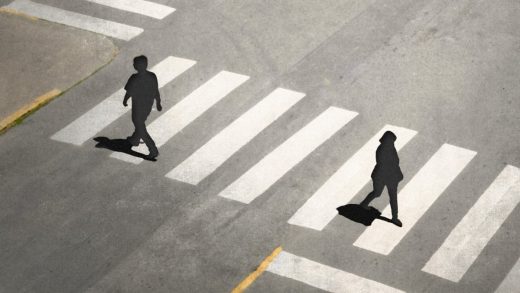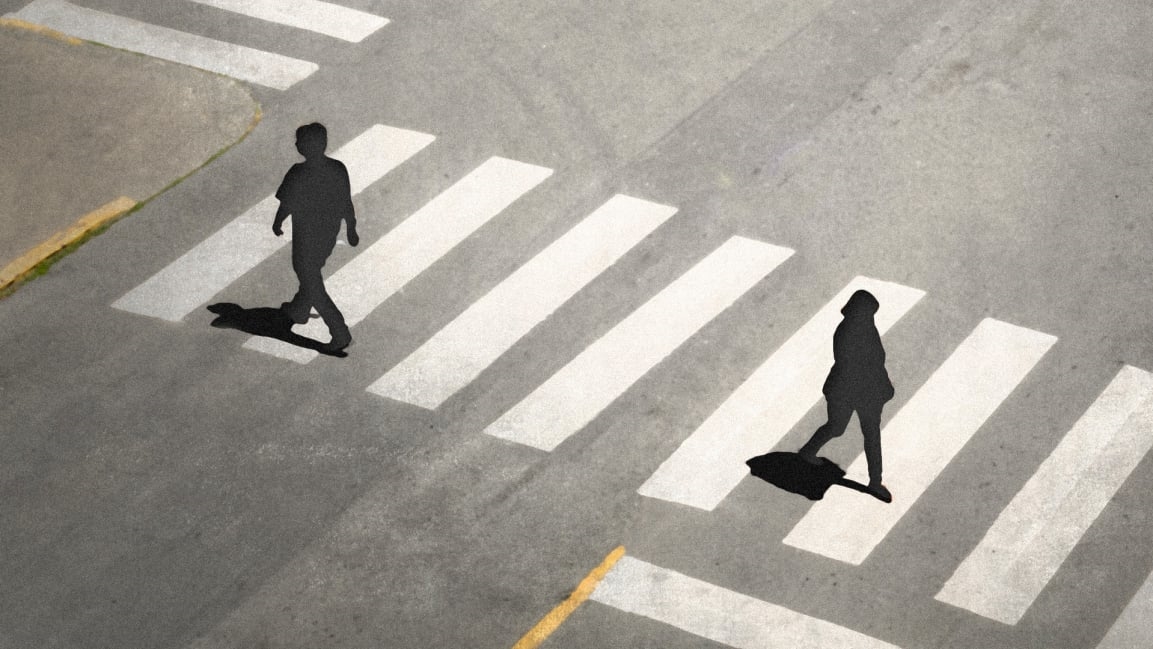The number of pedestrians killed by cars keeps going up
Every year, the amount of time Americans spend walking declines. Driving, on the other hand, has slightly but steadily risen in popularity since 2008. During that period, the number of pedestrians killed by people in cars has skyrocketed.
Investigating this disturbing trend is the subject of a report put out by the National Complete Streets Coalition (a program under Smart Growth America) called Dangerous by Design. The coalition releases this report annually, says Emiko Atherton, the coalition director, but what’s striking is that “things are just getting worse,” she says. “When you look at the numbers, four of the five major metro areas in the U.S. are just growing more dangerous for pedestrians.”
Between 2008 and 2017, the number of people struck and killed by a driver totaled 49,340. That’s a 35% increase over the past decade, and the report authors note that this is the equivalent of a jumbo jet full of people dying each day.
Atherton notes that this trend is universal, and reflective of the way in which both American street designs and policies favor cars over human-scale transit options, like walking or cycling. But states in the Sun Belt–the southern states–are notably more dangerous for pedestrians.
There, Atherton says, cities and suburbs both tend to be designed with multi-lane, wide roads. Sidewalks are not prioritized, and are often under-maintained or lacking altogether. Furthermore, “the way the streets are laid out, people often have to go a half-mile before they reach a point where they can cross,” she says. This type of car-first design forces people into unsafe situations–you can imagine a pedestrian trying to cross a busy road to reach a bus stop on the other side, with no protection from car traffic. “Cities and designers have to consider this,” Atherton says. “We’re still measuring our idea of successful road design based on how quickly cars can move from one place to another, not on how safely people can walk.”
This lack of safe, people-first design is particularly noticeable in communities of color. Black people are disproportionately more likely to be struck and killed by a car than either white people or people of Asian descent–18..3% compared to 12.4% and 8.1%, respectively. The likelihood that a person will be struck and killed by a car also declines dramatically as their income level goes up.
The reasons for this are many. First of all, communities of color and lower-income communities have been historically underinvested in many ways, including street design and infrastructure. Black neighborhoods, for instance, were more likely to be subdivided by arterial roads and interstates during the federal highway-building boom in the middle of the last century, and that legacy remains.
Furthermore, more money tends to flow to neighborhoods that are already well resourced. “We need to look at how money is being spent,” Atherton says. In D.C., she says, more money is spent on filling potholes in whiter, wealthier neighborhoods than on implementing traffic-calming measures, like sidewalk expansions, in poorer neighborhoods of color. Part of this is due to the fact that whiter, wealthier people are more likely to contact the government to request upgrades, whereas poorer residents of color–with good reason–lack the faith in local governments.
It’s therefore incumbent on cities and states to ensure that residents of communities most impacted by traffic violence are protected by policy. Dangerous by Design spells out several recommendations. States, Atherton says, are required to report the number of pedestrian fatalities, but they’re not penalized if that number is high or increasing. The Coalition would like to see states be required to use a portion of their highway safety funding budget toward implementing traffic-calming measures, like medians, protected crosswalks, bike lanes, and updated lights. They also want the federal government to endorse safe street design standards (the Coalition itself has enumerated what these might look like) that cities and communities can begin to work toward.
Ultimately, Atherton says, this work will require a culture shift. At the moment, pedestrian fatalities caused by drivers are seen as “acceptable deaths,” the report notes, because they are so commonplace. But the only acceptable number of deaths due to traffic, Atherton says, is zero. And if designers and policymakers work to prioritize human safety over vehicle speed, reaching zero may actually be possible.
(25)



